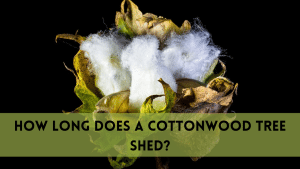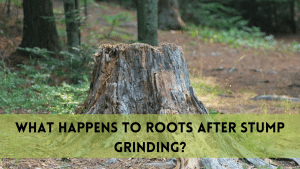Ivy creeping cup on a tree can look charming and lovely. But one must know that ivy can seriously damage the health and stability of a tree. Ivy is a type of climbing or ground-creeping plant in the genus Hedera. It is known for its distinctive lobed leaves and is often used for ornamental purposes in gardens and landscapes. Ivy grows very fast and weakens the tree from inside, makes the tree more prone to diseases and pests and it also hinders the sunlight reaching the tree. So you must know how to get rid of thick ivy on Trees and keep your yard and property safe.
Here are some strategies on how to remove thick ivy and keep your tree healthy.
Why Removing Thick Ivy Is Important?
Removing ivy is important in order to keep the tree healthy, maintain its structural integrity and keep the surrounding safe.Ivy, although aesthetically pleasing, can be harmful and cause a serious threat. It coils around tree trunks and branches, blocking sunlight and airflow.
This causes a decrease in photosynthesis, contributing to the tree’s decline. Additionally, ivy provides a refuge for pests and viruses, further jeopardizing the tree’s well-being.
The dense ivy can also make branches top-heavy, raising the risk of branches falling in storms and high winds. This poses a direct danger to people, property, and urban infrastructure in both urban and suburban areas.
How to Get Rid of Thick IVY on Trees?
Plan your removal:
Start by examining the tree and assessing the extent of the ivy infestation. Observe if the ivy has coiled around the trunk and branches, and check if it has reached the canopy.
Evaluate the tree’s overall health and inspect for any structural weaknesses caused by the presence of ivy. This initial assessment will help you make an estimate of the work ahead and whether expert help is necessary or not.
Tools to remove ivy:
- Pruning Shears: Use pruning shears to cut through thinner ivy stems and branches.
- Loppers: For thicker ivy stems, loppers, which are like large scissors, can be more effective than pruning shears.
- Hand Saw: A hand saw can be handy for cutting through thick ivy vines or tree branches that ivy might have entwined with.
- Hedge Trimmers: If you’re dealing with a large area of ivy, hedge trimmers can help you quickly cut it back.
- Mattock or Pulaski: These tools are useful for digging up the roots of the ivy, especially if you need to remove it from the ground.
- Crowbar: A crowbar can help you pry ivy roots from walls or trees if they have tightly adhered.
- Garden Rake: Use a garden rake to remove cut ivy from the ground after you’ve pruned.
Safety first:
Make sure to wear gloves, long-sleeved clothing, and pants to shield yourself from potential irritants and allergens found in ivy. If you’re prone to skin discomfort, it’s advisable to wear a face mask and protective glasses.
After handling ivy, be sure to wash your hands and clothing thoroughly. And if you are unsure about any of the steps you should take assistance from a professional.
Cutting the ivy:
Start removing the ivy from the base. Make sure that you are cutting as close from the base as possible. This will remove the ivy’s connection from the root system.
Clean the ivy:
To prevent reattachment, gently remove the chopped ivy from the tree’s base and the nearby soil. Use your hands or a rake to gather as much ivy as you can. To prevent further spreading, dispose of this ivy in securely sealed garbage bags or containers.
Patience:
Removing ivy from the tree requires patience and caution. Start from the base and slowly detach the ivy from the trunk and branches. Use your fingers to separate the ivy tendrils from the bark.
If the ivy is firmly attached, a putty knife or a similar tool can be used to assist in peeling it away, ensuring not to harm the tree’s bark. While ascending the tree, be vigilant for concealed ivy stems or tendrils.
Keep an eye:
Keep an eye on the tree to check for regrowth. If you see any regrowth try to remove it as soon as possible and repeat the same process you did the first time. Following the removal of ivy, contemplate mulching around the tree.
Mulch serves to retain moisture, insulate the soil, and minimize weed growth. It also ensures that the tree receives adequate watering and nutrients to facilitate its recovery and enhance its overall health.
FAQs
1: Why is it important to remove thick ivy from trees?
Removing thick ivy from trees is vital as it prevents damage, maintains tree health, and safeguards structural integrity, ensuring their longevity.
2: What tools are needed to remove thick ivy safely?
Essential tools for safe removal of thick ivy include gloves, pruning shears, loppers, hand saw, crowbar, and safety gear like goggles and masks. Make sure that all your cutting equipment is sharp.
3: How do you cut and remove ivy from the base of the tree?
To remove ivy from the tree base, start at the bottom, use hands or tools like pruning shears, and peel it gently, avoiding tree bark damage.
4: How can you prevent ivy from regrowing on the tree?
Prevent ivy regrowth by regularly monitoring the tree, removing any new shoots as soon as you see them, and applying herbicides or mulch to inhibit ivy growth.
Conclusion
Eliminating dense ivy from trees is vital for the well-being and safety of these natural assets. By applying the provided methods and utilizing suitable tools, you can liberate your trees from the grip of invasive ivy, enhancing their lifespan and the overall health of your surroundings.
Consistent monitoring and treatment are essential to preventing ivy overgrowth and enabling your trees to flourish once again. Take proactive measures to remove thick ivy from your trees, fostering a healthier environment for your entire ecosystem starting today.





